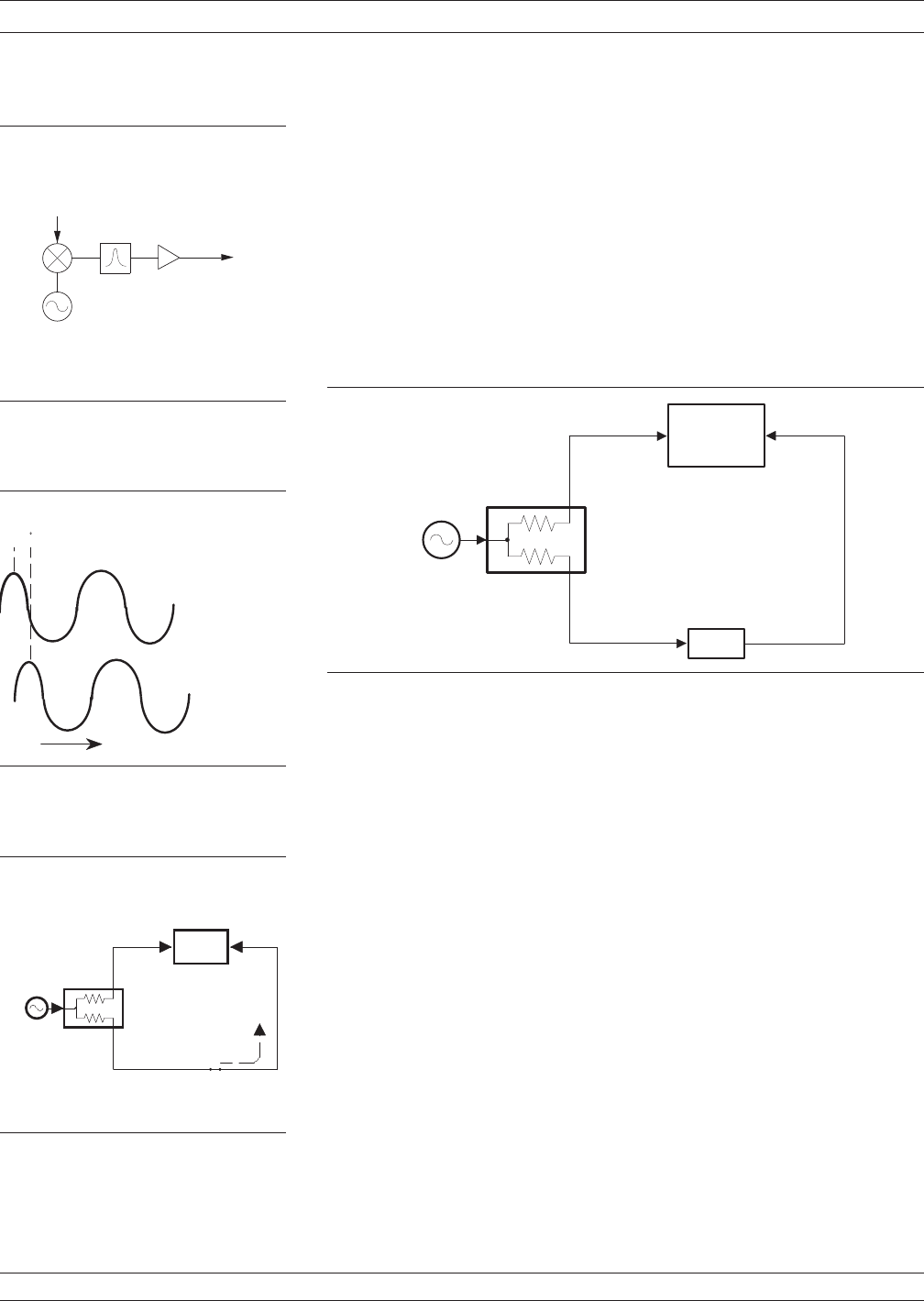
Vector Network Analyzer Basics
The network analyzer is a tuned receiver (Figure 3-4, left). The
microwave signal is down converted into the passband of the IF. To
measure the phase of this signal, we must have a reference to compare
it with. If the phase of a signal is 90 degrees, it is 90 degrees different
from the reference signal (Figure 3-5, left). The network analyzer
would read this as –90 degrees, since the test signal is delayed by 90
degrees with respect to the reference signal.
This phase reference can be obtained by splitting off some of the
microwave signal before the measurement (Figure 3-7, below).
The phase of the microwave signal after it has passed through the de
-
vice under test (DUT) is then compared with the reference signal. A
network analyzer test set automatically samples the reference signal,
so no external hardware is needed.
Let us consider for a moment that you remove the DUT and substitute
a length of transmission line (Figure 3-6, left). Note that the path
length of the test signal is longer than that of the reference signal.
Now let us see how this affects our measurement.
NETWORK ANALYZERS NETWORK ANALYZERS, A PRIMER
3-6 37xxxE OM
Figure 3-4. Network Analyzer is
a Tuned Receiver
PHASE MEASUREMENT
TIME
TEST
SIGNAL
REFERENCE
SIGNAL
90
Figure 3-5. Signals with a
90 Degree Phase
Difference
REFERENCE
SIGNAL
SPLITTER
TEST
SIGNAL
MICROWAVE
SOURCE
LONGER
PATH
LENGTH
PHASE
DETECTOR
Figure 3-6. Split Signal where
a Length of Line
Replaces the DUT
A NETWORK ANALYZER IS A TUNED RECEIVER
TUNABLE
LOCAL
OSCILLATOR
INTERMEDIATE
FREQUENCY (IF)
MICROWAVE
SIGNAL
• GREATER DYNAMIC RANGE
• LESS SENSIVITY TO INTERFERING SIGNALS
DUT
PHASE
DETECTOR
REFERENCE
SIGNAL
SPLITTER
TEST
SIGNAL
MICROWAVE
SOURCE
Figure 3-7. Splitting the Microwave Signal
